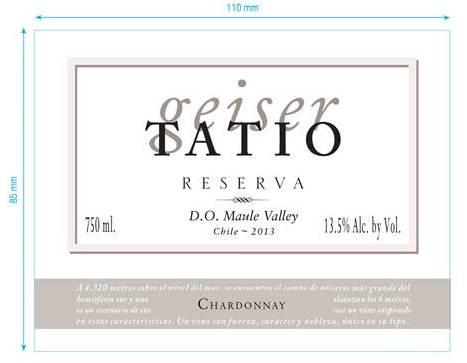2013 Maule Valley Chardonnay
The San V Geiser Tatio Chardonnay from the 2013 vintage, hailing from the renowned Maule Valley, is a captivating white wine that showcases exceptional craftsmanship. Its inviting golden hue hints at the richness within. With a generously full-bodied profile, this Chardonnay displays a perfect balance of lively acidity, making each sip refreshingly bright and mouthwatering. The fruit intensity is pronounced, revealing delightful notes of ripe stone fruits, complemented by subtle undertones of citrus and a hint of vanilla. The wine's dryness lends itself to a well-structured finish, allowing it to pair beautifully with a variety of dishes, from seafood to creamy pastas. Overall, this Chardonnay exemplifies the best of what the Maule Valley has to offer, making it a delightful addition to any wine lover's collection.
The San V Geiser Tatio Chardonnay from the 2013 vintage, hailing from the renowned Maule Valley, is a captivating white wine that showcases exceptional craftsmanship. Its inviting golden hue hints at the richness within. With a generously full-bodied profile, this Chardonnay displays a perfect balance of lively acidity, making each sip refreshingly bright and mouthwatering. The fruit intensity is pronounced, revealing delightful notes of ripe stone fruits, complemented by subtle undertones of citrus and a hint of vanilla. The wine's dryness lends itself to a well-structured finish, allowing it to pair beautifully with a variety of dishes, from seafood to creamy pastas. Overall, this Chardonnay exemplifies the best of what the Maule Valley has to offer, making it a delightful addition to any wine lover's collection.




